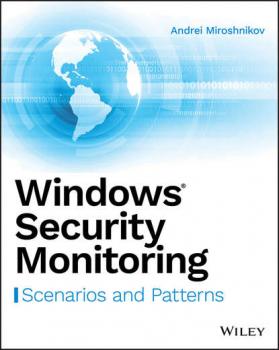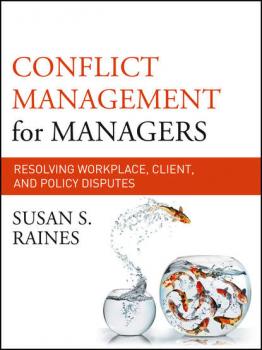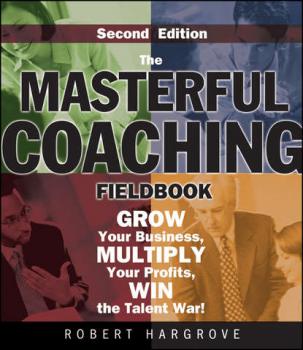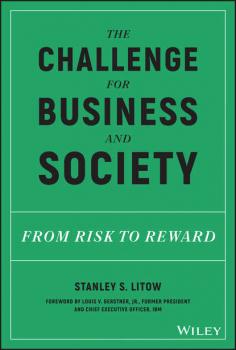ТОП просматриваемых книг сайта:
Группа авторов
Список книг автора Группа авторовАннотация
An information system may be regarded as an organized set of resources, both technological and human. Security should take this specificity into consideration in order to ensure an overall security of information systems. The security of information systems is usually tackled in a technological perspective. This book proposes to focus not only on information systems' security in a technological perspective, but also in a human, managerial and organizational perspective.
Аннотация
The aim of this book is to describe the methodology of conducting the THEDRE research «Traceable Human Experiment Design Research». It applies to Research in Human Centered Informatics (RICH). These are areas of computer research that integrate users to build scientific knowledge and supporting tools for this research. As an example, we can mention the relevant fields such as Information Systems (IS), Human Machine Interfaces (HMI) Engineering, and Human Information Systems (HIA). The construction of this language and method is based on experiments conducted since 2008 in the field of RICH.
Аннотация
For 200 years, industry mastered iron, fire, strength and energy. Today, electronics shapes our everyday objects, integrating chips: computers, phones, keys, games, household appliances, etc. Data, software and calculation frame the conduct of humankind, and everything is translated into data. The first volume in this series analyzes the stakes of the massive data which accumulate on the Internet, keeping track of our actions and gestures, the state of the world and our knowledge.
Аннотация
Go deep into Windows security tools to implement more robust protocols and processes Windows Security Monitoring goes beyond Windows admin and security certification guides to provide in-depth information for security professionals. Written by a Microsoft security program manager, DEFCON organizer and CISSP, this book digs deep into the underused tools that help you keep Windows systems secure. Expert guidance brings you up to speed on Windows auditing, logging, and event systems to help you exploit the full capabilities of these powerful native tools, while scenario-based instruction provides clear illustration of how these events unfold in the real world. From security monitoring and event detection to incident response procedures and best practices, this book provides detailed information on all of the security tools your Windows system has to offer. Windows includes many native tools that can help IT professionals and security experts spot and remedy suspicious activities on servers, networks, and end-user computers. If you're like many Windows pros, you're probably not taking full advantage of these features. This book takes you deep into Windows' underutilized built-in security tools to help you beef up your monitoring, detection, and response processes. Detect anomalous events and implement centralized alerting infrastructure Dig into the native Windows tools that enable robust security measures Understand the details of Powershell, Applocker, LogParser, and other tools Adopt effective incident response processes for various common scenarios Fully applicable to a range of Windows versions—back to Windows Vista and Windows Server 2008—this book is designed for real-world implementation. As the threats to your data grow more numerous by the day, it becomes ever more critical to use every security tool at your disposal. Windows Security Monitoring offers complete, expert guidance toward robust security with specialist-level use of powerful Windows tools.
Аннотация
With the idea of “deep learning” having now become the key to this new generation of solutions, major technological players in the business intelligence sector have taken an interest in the application of Big Data. In this book, the author explores the recent technological advances associated with digitized data flows, which have recently opened up new horizons for AI. The reader will gain insight into some of the areas of application of Big Data in AI, including robotics, home automation, health, security, image recognition and natural language processing.
Аннотация
Be prepared for the arrival of automated decision making Once thought of as science fiction, major corporations are already beginning to use cognitive systems to assist in providing wealth advice and also in medication treatment. The use of Cognitive Analytics/Artificial Intelligence (AI) Systems is set to accelerate, with the expectation that it’ll be considered ‘mainstream’ in the next 5 – 10 years. It’ll change the way we as individuals interact with data and systems—and the way we run our businesses. Cognitive Analysis and AI prepares business users for the era of cognitive analytics / artificial intelligence. Building on established texts and commentary, it specifically prepares you in terms of expectation, impact on personal roles, and responsibilities. It focuses on the specific impact on key industries (retail, financial services, utilities and media) and also on key professions (such as accounting, operational management, supply chain and risk management). Shows you how users interact with the system in natural language Explains how cognitive analysis/AI can source ‘big data’ Provides a roadmap for implementation Gets you up to speed now before you get left behind If you’re a decision maker or budget holder within the corporate context, this invaluable book helps you gain an advantage from the deployment of cognitive analytics tools.
Аннотация
“Raines masterfully blends the latest empirical research on workplace conflict with practical knowledge, skills, and tools to effectively manage and prevent a wide range of conflict episodes. This is a highly applicable ‘top shelf book’ that will assist anyone from the aspiring manager to top level management and leadership in the public, private, and nonprofit sectors. It will also be a fast favorite of professors, trainers, and students of business and conflict management.” – Brian Polkinghorn, Distinguished Professor, Center for Conflict Resolution, Salisbury University. “With her broad dispute resolution, teaching, and editing experience, Susan Raines is uniquely qualified to organize what is known about conflict management in the workplace. She has succeeded in providing private, public, and nonprofit managers with accessible concepts and tools to deal effectively with the internal and external conflicts they must confront every day. Essential reading for all managers!” – Alan E. Gross, senior director, training coordinator, New York Peace Institute “After reading an advance copy of Raine’s impressive book, I can’t wait to begin to use it as a seminal text in my classes in organizational conflict. I am amazed at her ability to cover so well such disparate subjects as systems design, public policy disputes, small and large group processes, customer conflicts, conflicts in a unionized environment, and conflicts within regulatory contexts. Her user-friendly writing style is enhanced by her salient examples of exemplary and mistake-laden practices within public and private sector organizations. A ‘must-read’ for scholars, students, and practitioners interested in organizational conflict.” – Neil H. Katz, professor, Conflict Analysis and Resolution, Nova-Southeastern University “Conflict management skills are essential to a manager’s success. Raines, a leading scholar and practitioner, provides a comprehensive and strategic new guide to these critical skills and how to use them in any organization.” – Lisa Blomgren Bingham, Keller-Runden Professor of Public Service, School of Public and Environmental Affairs, Indiana University
Аннотация
In real-life conflict resolution situations, one size does not fit all. Just as a mechanic does not fix every car with the same tool, the conflict resolution practitioner cannot hope to resolve every dispute using the same technique. Practitioners need to be comfortable with a wide variety of tools to diagnose different problems, in vastly different circumstances, with different people, and resolve these conflicts effectively. The Conflict Resolution Toolbox gives you all the tools you need: eight different models for dealing with the many conflict situations you encounter in your practice. This book bridges the gap between theory and practice and goes beyond just one single model to present a complete toolbox – a range of models that can be used to analyze, diagnose, and resolve conflict in any situation. It shows mediators, negotiators, managers, and anyone needing to resolve conflict how to simply and effectively understand and assess the situations of conflict they face. And it goes a step further, offering specific, practical guidance on how to intervene to resolve the conflict successfully. Each model provides a different and potentially useful angle on the problem, and includes worksheets and a step-by-step process to guide the reader in applying the tools. Offers eight models to help you understand the root causes of any conflict. Explains each model's focus, what kind of situations it can be useful in and, most importantly, what interventions are likely to help. Provides you with clear direction on what specific actions to choose to resolve a particular type of conflict effectively. Features a detailed case study throughout the book, to which each model is applied. Additional examples and case studies unique to each chapter give the reader a further chance to see the models in action. Includes practical tools and worksheets that you can use in working with these models in your practice. The Conflict Resolution Toolbox equips any practitioner to resolve a wide range of conflicts. Mediators, negotiators, lawyers, managers and supervisors, insurance adjusters, social workers, human resource and labour relations specialists, and others will have all the tools they need for successful conflict resolution.
Аннотация
Robert Hargrove shares his secrets as a masterful coach with leaders of all levels: Coaching is about realizing an impossible dream and winning at the great game of business, not just about changing attitudes and behaviors. This book describes: How to find the best talent on earth How to create an impossible future and WIN in your business How to create a winning game plan How business can be the ultimate self-development and growth experience
Аннотация
A roadmap to improve corporate social responsibility The 2016 U.S. Presidential Campaign focused a good deal of attention on the role of corporations in society, from both sides of the aisle. In the lead up to the election, big companies were accused of profiteering, plundering the environment, and ignoring (even exacerbating) societal ills ranging from illiteracy and discrimination to obesity and opioid addiction. Income inequality was laid squarely at the feet of us companies. The Trump administration then moved swiftly to scrap fiscal, social, and environmental rules that purportedly hobble business, to redirect or shut down cabinet offices historically protecting the public good, and to roll back clean power, consumer protection, living wage, healthy eating initiatives and even basic public funding for public schools. To many eyes, and the lens of history, this may usher in a new era of cowboy capitalism with big companies, unfettered by regulation and encouraged by the presidential bully pulpit, free to go about the business of making money—no matter the consequences to consumers and the commonwealth. While this may please some companies in the short term, the long term consequences might result in just the opposite. And while the new administration promises to reduce «foreign aid» and the social safety net, Stanley S. Litow believes big companies will be motivated to step up their efforts to create jobs, reduce poverty, improve education and health, and address climate change issues – both domestically and around the world. For some leaders in the private sector this is not a matter of public relations or charity. It is integral to their corporate strategy—resulting in creating new markets, reducing risks, attracting and retaining top talent, and generating growth and realizing opportunities. Through case studies (many of which the author spearheaded at IBM), The Challenge for Business and Society provides clear guidance for companies to build their own corporate sustainability and social responsibility plans positively effecting their bottom lines producing real return on their investments. This book will help: • Create an effective corporate social responsibility and sustainability plan • Provide long-term bottom line benefit • Protect and enrich brand value • Recruit and retain top talent Perfect for CEOs, CFOs, Human Resource/Corporate Affairs executives, but also for government and not-for-profit leaders, this book helps you come up with a solid plan for giving back to society, producing real sustainable value.










